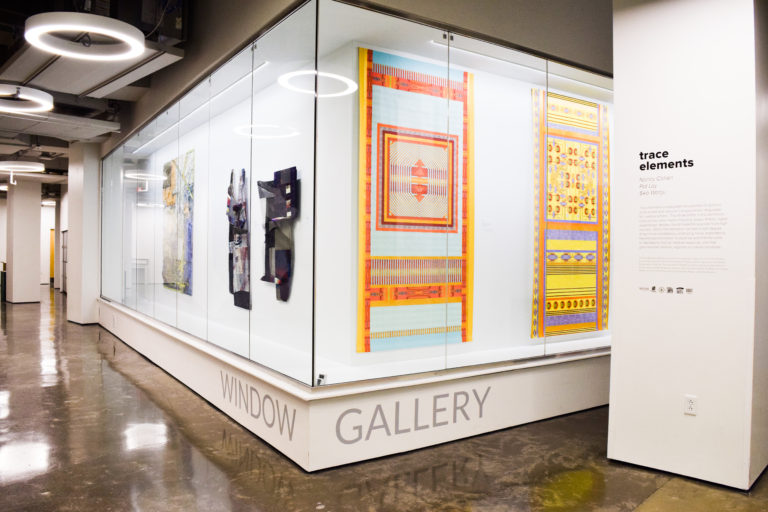Nancy Cohen, October Drawing, 2015. Handmade paper, 98 x 80 inches. Courtesy of the artist.
Artists
Associated Public Programs
About
Trace Elements investigates the potential of abstract art to create and discover transcendental languages for creative actions. The three artists in this exhibition, Nancy Cohen, Pat Lay, and Wonju Seo, work across many media including paper, thread, digital assemblage, textiles, found materials sources from high and low. Within Trace Elements, we see a high degree of technical competency underlying these explorations beyond representation. It could be said that the work is intended to elicit an intuitive response, one that goes beyond national, regional or cultural narratives.
Artist Statements
NANCY COHEN
I am interested in the juxtaposition of fragility and strength – evident in our personal lives and our broader environment. Under that overarching idea my recent work falls into two categories. Work that references the fragility of our natural environment – developed through both a scientific and personal study of waterways and through collaborations with both scientists and environmentalists and work that is more about the individual navigating a perilous world.
I have working with handmade paper for over 25 years now. I am drawn to the material for its transformative qualities, its potential for translucency, and its ability to be both skin and structure. I am interested in working with processes that share these dualities and allow me to merge material and content.
I have a particular interest in the environmental issues concerning the waterways of NY and NJ, around where I live and work. One focus has been on changes to the landscape as a result of Hurricane Sandy, some made through personal observation and others through images in the media. This drawing evolved from photographs of the collapsed roller coaster in Seaside Heights on the Jersey Shore.
My working methods allow an implication of the body in the work—its touch and tenderness, its frailty and endurance. It is my goal that in this work, as in our own lives, elements hang in the balance, each one necessary, vulnerable, beautiful and above all interdependent.
PAT LAY
In this series of collages, 96 x 48 inches, the scroll format is used to give the works the presence of a thangka, an object for contemplation. Digital images scanned from computer circuit boards are printed on Japanese kozo paper and then collaged into patterns that transform them into a new matrix. A place, created in response to our world of technological advancements and digital progress. These works continue to question and critique the paradoxical relationship between man and technology. I have taken a religious icon, the Tibetan thangka, and have transformed it into a contemporary icon that speaks to our obsession with technology.
WONJU SEO
My work is a contemporary geometric abstract textile art, which is influenced by my Korean heritage, Pojagi especially Chogakbo. Chogakbo is patchwork wrapping cloth made out of colorful scraps of natural fabric from making traditional Korean costumes called Hanbok. It was created by all classes of women, who lived in Confucian Culture between 14th Century and 19th Century in Korea for wrapping, covering and transporting everyday objects as well as for religious rituals and weddings. To create my work, I combine silk painting and mixed media collage techniques with the skills of centuries-old traditional Pojagi making, such as hand sewing, folding and embroidery. I revisited the pure geometry constructed in antique Pojagi forms with traditional Korean colors, and reinterpreted it through my artistic view with contemporary concerns. The artwork also visualizes the process of redefining two identities of my life through both, the memories of my childhood under a patriarchy in Korea, and experiences of current life in western society as an adult. It also evokes my life-long questions of where I came from, where I am now and where my life is heading.



